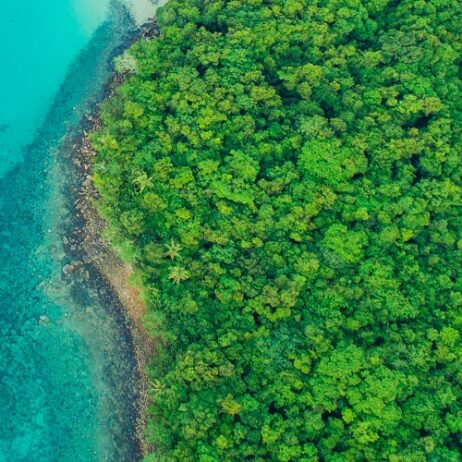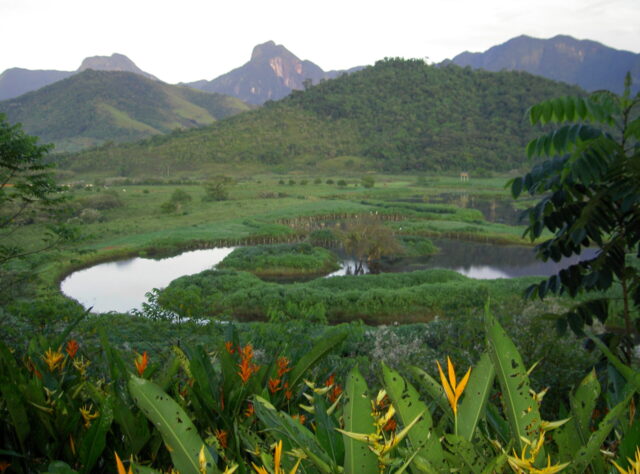
The Atlantic Forest of South America is one of the most biodiverse rainforests on Earth but also one of the most depleted and threatened. For the last two decades, World Land Trust (WLT) has been working closely with the Brazilian NGO Reserva Ecológica de Guapiaçu (REGUA) in a partnership to protect and restore this biologically unique but still shrinking biome.
Overshadowed by the much larger Amazon rainforest, the Atlantic Forest stretches for 3,000 kilometres (1,900 miles) along the Atlantic coastline of South America, from the tropics to subtropical regions south of the Tropic of Capricorn. Extending over vast longitudinal and altitudinal ranges and with decreasing rainfall away from the coast, the Atlantic Forest is highly diverse, with a wide variety of forest types supporting rich biodiversity and some of the highest levels of endemism on Earth.
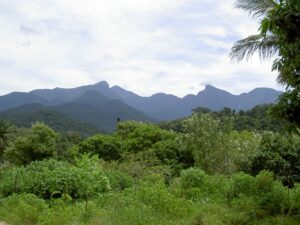
The Atlantic Forest may be less well-known than its Amazonian cousin but is no less important for conservation and biodiversity. Credit: REGUA/WLT
Once one of the largest rainforests in the Americas, covering 150 million hectares (371 million acres), the Atlantic Forest has been decimated by centuries of exploitation and deforestation. A study in 2009 estimates just 11.7% of the original forest cover remains, with other estimates putting the figure as low as 7%. The few large fragments that do remain, found mainly on inaccessible steep slopes that are difficult to exploit, are vital refugia for the region’s biodiversity. However, the vast majority of the remaining Atlantic Forest, around 83%, comprises small, less than 50-hectare (124-acre) isolated fragments of secondary forest. Forest fragments of this small size cannot sustain viable populations of many species, especially those unable to cross the often considerable gaps between them, so a high proportion of the Atlantic Forest’s biodiversity remains threatened by extinction.
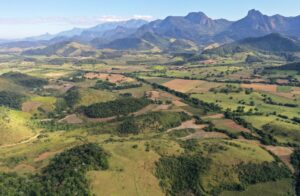
Owing to decades of logging, as little as 7% of the Atlantic Forest remains today. That is why REGUA’s work to protect what remains is so important. Credit: Thomas Locke
A WLT partner since 2005, REGUA was established in 2001 to protect the Atlantic Forest and biodiversity of the Guapiaçu watershed in the Serra dos Órgãos mountains of south-east Brazil. Here, the steep mountainous valley sides remain densely clad in selectively logged primary forest, while isolated forest fragments persist in the lowlands.
Protecting the remaining Atlantic Forest of the Guapiaçu watershed is a top priority for REGUA. To ensure habitat protection in the long term, expanding the reserve through land purchases is essential, and this is where partners such as WLT continue to play a vital role. In 2006, WLT funded one of REGUA’s earliest land purchases, increasing the protected area of forest by 259 hectares (641 acres). Donations from organisations and individuals made it possible for REGUA to add 10,139 hectares (25,053 acres) to the reserve, 1,532 hectares (3,786 acres) of which has been funded or part-funded by WLT over the last two decades. An additional 4,202 hectares (10,384 acres) is managed by REGUA through land management agreements, with another 652 hectares (1,611 acres) leased as part of the reserve, adding up to a total of 14,993 hectares (37,048 acres) of Atlantic Forest protected by REGUA today.
The reserve also includes some degraded pasture and scrubland. Although some of these plots are left to regenerate naturally, reforestation of previously forested land has played a key role in REGUA’s work. At the time of writing, REGUA has planted 840,000 trees on degraded land, mostly purchased pasture, restoring an astonishing 607 hectares (1,500 acres) to forest while also forming critical wildlife corridors between previously isolated forest fragments and reconnecting genetically separated populations of flora, fauna and funga.
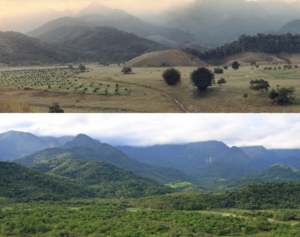
A comparison between 1987 and 2010, showing the extraordinary impact of REGUA’s tree planting work, supported by WLT’s Plant a Tree programme. Credit: REGUA
REGUA’s tree nursery was established in 2005 and expanded rapidly to accommodate the increasing scale of REGUA’s reforestation programme. Today, the nursery produces around 60,000 saplings a year, mostly from seeds collected from the forest by REGUA’s team of rangers. To maximise species diversity and kick-start ecological succession in the young replanted forests, up to 180 tree species, both pioneer and climax species, are produced.
REGUA’s experienced nursery staff, often with help from overseas volunteers, germinate the seeds in the nursery and carefully nurture the growing seedlings until they are mature enough to have a higher chance of survival when planted out. REGUA has learned through experience that simply planting the saplings and leaving them to their own devices leads to increased losses. Lack of water can be a significant issue, and watering the newly planted saplings by hand is impractical. So to address this, tree planting takes place during the summer months, when the young trees are sustained by regular seasonal rains.
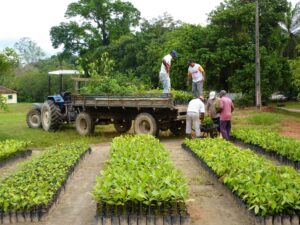
Rangers at REGUA loading saplings for transport to the restoration sites. Credit: Alan Martin
Perhaps the jewel in the crown of REGUA’s success is the restoration of the wetland in the lowlands of the reserve. The original wetland here consisted of swamp and flooded forest dominated by Tabebuia cassinoides trees and tree ferns covered with epiphytic plants such as bromeliads and orchids. Exceptionally rare today, such wetlands once existed across much of the lowlands but were drained over the centuries to reduce the risk of malaria and yellow fever. The wetland at REGUA was converted to pasture and arable land in 1982, and restoring it became an early key objective of REGUA.
Restoration began by building a series of earth dams and diverting the course of a small stream to create new lagoons. REGUA successfully reintroduced Tabebuia trees and completely reforested the surrounding land. Two decades on the area is unrecognisable, and biodiversity has skyrocketed. Aquatic species such as Broad-snouted Caiman, Capybara, crakes, herons and wildfowl returned quickly, and over 220 bird species have now been recorded. The wetland restoration proved so successful that the newly created habitat was ideal for the reintroduction of Lowland Tapir, marking the return of the species to Rio de Janeiro state in more than a century.
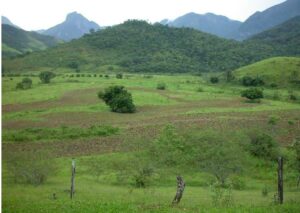
Having been partnered with REGUA for 20 years, WLT has the privilege of seeing the long-term transformation of Brazil’s Atlantic Forest in the land owned and managed by REGUA. In 2002, restoration of the wetland at REGUA began. Credit: REGUA
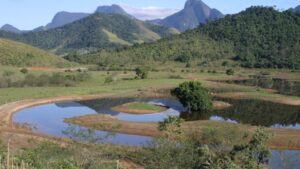
A photo from 2004 showing the channels dug to restore one of the wetlands at REGUA. Credit: REGUA
Despite legal protection since the mid-1980s, the Atlantic Forest remains severely threatened by urbanisation, over-exploitation of resources and poaching. Only through continued protection and restoration of lost habitat will the future of the Atlantic Forest of the Guapiaçu watershed and its biodiversity be ensured.
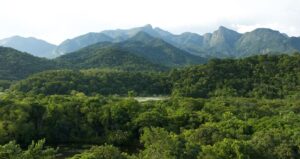
A photo from 2019 taken a bit further back showing the wetland in the centre-ground, surrounded by thriving forest. Credit: REGUA
